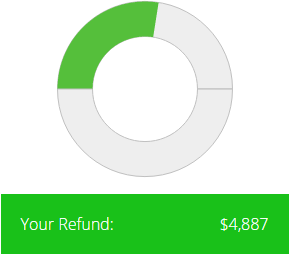The Tax Cuts and Jobs Act has brought changes the landscape for homeowners looking to buy or sell their homes. In the past, there were several deductions and exemptions that specifically benefitted homeowners. However, many of these have been affected by the new tax reform. If you are a homebuyer or seller in the current market, here is what you need to know about the changes to your taxes.
The Tax Cuts and Jobs Act made several changes to deductions and exemptions for homeowners, so if you’re filing your taxes this year, here’s what you need to know.
If you have bought or sold a home in the last few years, you may have been eligible for certain tax breaks that were specifically designed to benefit homeowners. However, several of these deductions and exemptions have been affected by the Tax Cuts and Jobs Act. This means that if you were a homebuyer or seller in the past few years, your tax filing will be different compared to the years before. Here is what you need to know about the changes to expect.
The state and local taxes you can tax deduct on your federal income tax return are now capped at $10,000. This change was made by the Tax Cuts and Jobs Act of 2017. Previously, there was no limit to the amount of state and local taxes you could deduct. This meant that if you itemized your deductions, you could deduct all of your property tax and state tax and local income tax you paid. The new $10,000 limit applies to all state and local taxes combined. If you pay both property taxes and state income taxes, you will have to choose which deduction to take based on which will give you the lower tax bill. The limit also applies to married couples filing separately – each spouse is allowed to deduct up to $5,000 for a total of $10,000.
In other words, After tax reform, the amount you can deduct for state and local income, property, and sales taxes combined is now capped at $10,000. This means that as married, you and your spouse may each deduct $5,000 for a total of $10,000. Get a better idea on your tax refund with you tax calculator.

Moving Expenses and Costs
Relocating for work can be expensive, but the IRS allowed certain deductions for moving expenses before tax reform. This included transportation, lodging, packing materials, storage, and insurance. However, after-tax reform in 2018, these deductions are no longer available, except for active-duty military members who are moving on orders. So if you’re planning a job-related move, be aware that you may have to shoulder the entire cost yourself.
Mortgage Loan Interest Tax Deduction for Homebuyer
The mortgage loan interest deduction is a tax benefit that allows you to deduct the interest you pay on your home loan. Prior to tax reform in 2017, the maximum amount of debt eligible for the deduction was $1 million. However, the new tax law lowered the maximum debt allowance to $750,000. As a result, you can now deduct interest on mortgages up to $750,000.
Capital Gains Tax Exemption
There are a few things to know about capital gains taxes and exemptions if you’re thinking of selling your home. First, depending on how long you’ve lived in the house, you may be exempt from paying taxes on some of the capital gains. If you owned while living in the house for at least two out of the five years before selling to a homebuyer, the IRS may not tax any capital gains from the sale. This is called capital gains exclusion.
The Tax Cuts and Jobs Act didn’t change the capital gains exclusion, but it did change how capital gains tax rates are determined. Before the new tax law, your rate was based on which income tax bracket you fell into. Now, your rate is determined by a new income threshold.
Here’s a breakdown of the different rates:
0% for income up to $38,600 for single filers ($77,200 for joint filers)
15% income between $38,601 and $425,800 ($77,201 to $479,000 for joint filers)
20% for $425,801 and up ($479,001 and up for joint filers)
So, if you’re considering of selling your home, keep in mind that you may have to pay capital gains taxes on the sale – unless you meet the criteria for the exclusion.
Standard Tax Deduction for Homebuyer and Home Seller
The standard deduction is a specific set amount you can tax deduct from your income if you do not itemize your deductions. The amount of the tax deduction depends on your filing status. For example, for the 2018 tax year, the standard deduction for a single filer is $12,000. If your taxable income is $50,000, you will reduce your taxes owed by $12,000 by taking the standard deduction instead of itemizing.
The Tax Cuts and Jobs Act of 2017 increased the standard deduction significantly. It will now make more sense for many taxpayers to take the standard deduction rather than itemizing their deductions. However, everyone’s situation is different, so be sure to run your taxes both ways to see which method will benefit you more.












